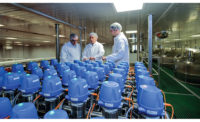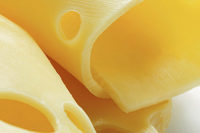5 Tools To Reduce Contamination In Dairy Plants

Dairy foods have been around for thousands of years. The dairy industry has operated plants for hundreds of years. While the equipment and technology used today are noticeably different from 20 years ago, the processing steps are very similar and sometimes unchanged from a hundred years ago.
With all of this experience and a superior cold chain, why does the dairy industry still struggle with product safety and quality contamination events? A better question is: “What drives contamination events?”
Before I come to the tools for reducing contamination events, let’s review the Food and Drug Administration’s Reportable
Food Registry (available at http://tinyurl.com/24rjcm4) and the FDA Recall database (http://www.fda.gov/Safety/Recalls/). These resources provide some information about the contaminants that have recently been found in dairy products. It is likely there are many more contamination events that are caught by the dairy plant and managed internally.
While the specific dairy information for each of the two databases differ, they trend together, with the exception of the salmonella numbers, which reflect the PCA peanut product issue linked to salmonella.
Understanding the origin of the contaminant can provide insight into the likely cause of the contamination event. Let’s take them one by one.
Microbial contamination events (MCE).Campylobacter, along with Listeria mono., E. coli O157:H7, Staph. and Shigella are commonly found in soil. They can find their way into the dairy plant and cause contamination events through post-pasteurization of finished dairy products via aerosolization, unclean equipment, transport carts and vehicles (fork lifts and floor lifts), as well as production staff shoes and unwashed hands. Salmonella is commonly found in birds and reptiles. It finds its way into the dairy plant environment through contaminated outer packaging of ingredients and wooden pallets, roof leaks (natural roosting location for wild birds) or construction that penetrates the roof. A roof leak or construction penetrating the roof is a catastrophic event and response should include immediate drying, cleaning and sanitizing of all surfaces “touched” by the leak and repair of the roof as soon as practical.
Physical contamination events (PCE). Physical contamination is usually caused by packaging debris (cardboard or plastic residue in the product), metal (usually from processing equipment) or glass/brittle plastic (processing area or packaging container).
Chemical contamination events (CCE). These events usually result from equipment cleaners and sanitizers that are not completely flushed out of the processing equipment. Occasionally, lubricants can contribute to a chemical contamination event, but are usually food grade.
Based on almost 30 years of experience in dairy processing plants and supported by the FDA databases, my Top 5 Tools to reduce contamination events in dairy plants are:
1. Reducing production start-ups, interruptions, change-overs and shutdowns allowing microbial contamination to take hold.
2. Training to address employee behavior and hygiene to result in:
a. Positive behavior changes, for example, increased hand washing
b. Maintaining clean uniforms and shoes (should never leave the plant)
c. Following clear and defined traffic patterns
d. Minimizing use of water and sanitation hoses
e. Conforming to standard operating procedures, particularly where ingredients and product are exposed to potential contamination during processing, (that is, blend tanks)
3. Managing allergens through:
a. Storage segregation
b. Production scheduling
c. Effective staging of ingredients and packaging
d. Product and package label verification
4. Instituting plant facility maintenance controls during remodeling, renovation, roof leaks and installation of new equipment.
5. Applying effective preventative maintenance programs that:
a. Keep processing equipment properly repaired and replaced
b. Manage and monitor all sources of glass and brittle plastic in a processing plant
c. Prohibit retractable metal knife blades in blending rooms
d. Monitor metal pieces from processing equipment
e. Maintain frequent checks of in-line filter and screens, and periodic replacement of equipment to keep glass, brittle plastic, metal and packaging material out of the finished product.
In summary, to drive improved dairy product safety and quality, dairy plant managers, supervisors and quality assurance directors should track contamination events annually and focus their resources on the Top 5 ways to reduce these events. Doing so will drive down the annual number of contamination events and drive up a plant’s net income.
Looking for a reprint of this article?
From high-res PDFs to custom plaques, order your copy today!








